IN FOCUS: Amid a rapidly ageing population, what are the missing pieces in Singapore’s residential eldercare puzzle?
Staying at home or going to a nursing home have long been the only choices available for seniors in need of care. But what about those who fall in between? From group homes to retirement communities, CNA explores what other options exist.
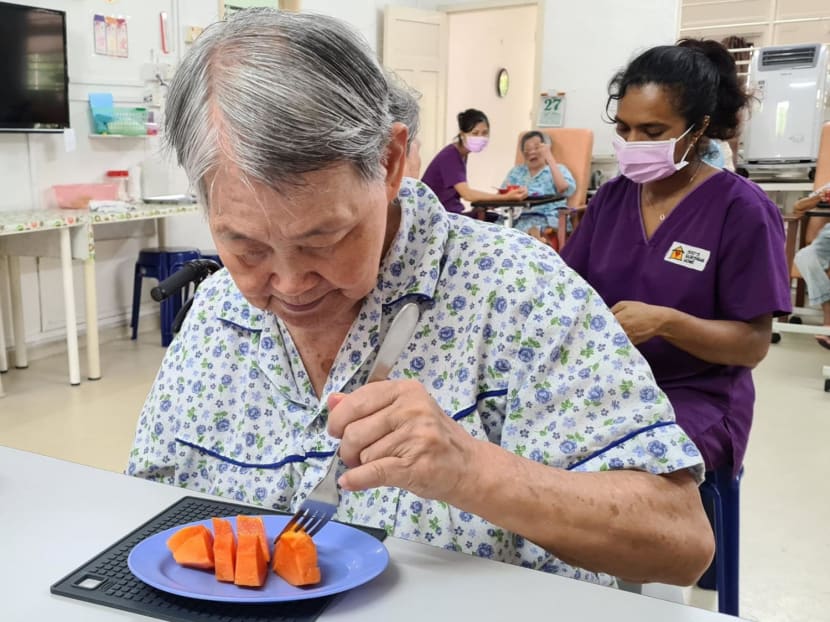
Ms Hock York Soeak, 76, having a meal at Soo's Nursing Home, where she has lived for the past 15 years.
SINGAPORE: After falling from a ladder years ago, Ms Hock York Soeak suffered from a head fracture that would eventually leave the right side of her body paralysed.
Requiring long-term care and therapy, she has spent the past 15 years in a single-storey bungalow in Bukit Timah – not her own, but a nursing home she shares with a handful of seniors.
“We eat together … play together … we’ve known each other for a long time,” said Ms Hock, 76, of the tight-knit community at Soo’s Nursing Home, which has stood on Sixth Avenue for 30 years.
But she bit back tears as she prepared to speak to CNA on Nov 8.
She was to leave the home for good that afternoon, as Soo’s is in the process of closing. Its lease expires at the end of the year, following multiple extensions over the decades from owners of the plot.
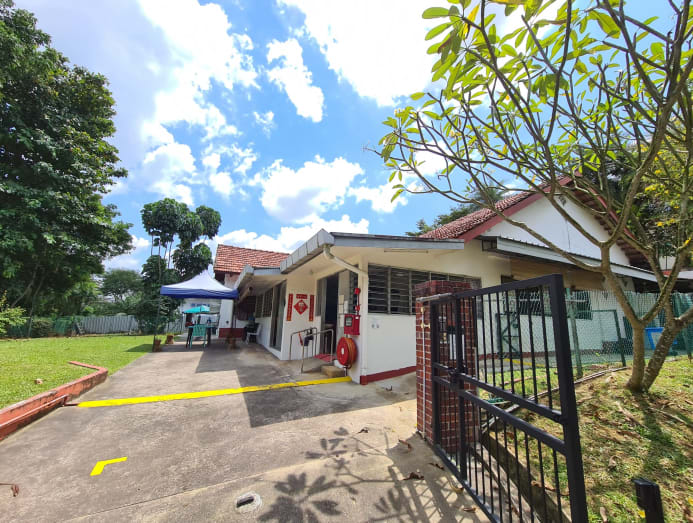
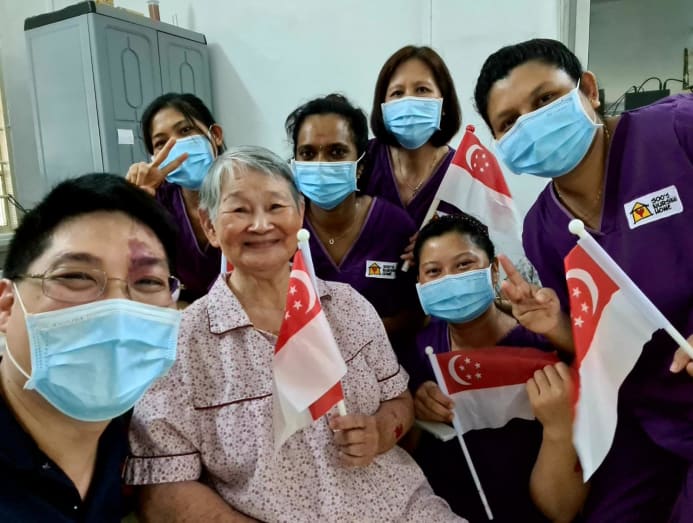
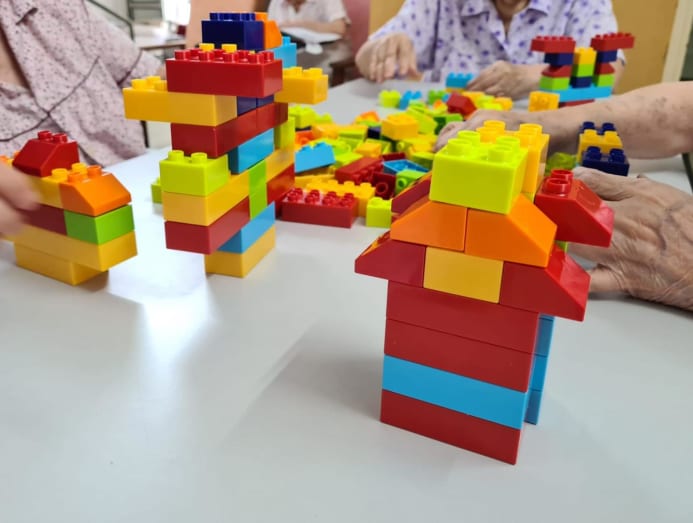
Such homes converted from small buildings were among the earliest types of eldercare residences in Singapore, before large purpose-built institutions became the norm, said Mr Andrew Soo, the home’s second-generation manager.
In fact, only five nursing homes still have temporary permission to operate from plots zoned for residential use. Regulations and costs have made it hard to find a similar set-up to lease, said Mr Soo.
These small homes are an eldercare option that is falling out of the mainstream, as Singapore continues to rejig the puzzle pieces of its care ecosystem while a silver tsunami looms.
WHAT ARE THE OPTIONS FOR SINGAPORE’S GREYING POPULATION?
Currently, 17.6 per cent of the population here are aged 65 and above. By 2030, it will spike to about 25 per cent with more than 900,000 senior citizens, many of whom will require some form of care.
Already, there are almost 70,000 seniors who are unable to perform or who have difficulty performing one basic activity, such as self-care, according to census data from 2020.
Singapore’s eldercare ecosystem has changed over the decades to gear up for this, with a network of care institutions in the community, higher nursing home standards and more capacity with purpose-built homes.
At the same time, many seniors have expressed the desire to “age in place” and live out their lives in the comfort of their own homes.
With this, residential eldercare options have come into the spotlight – where and how can seniors live long-term as they age?
A diversity of options is critical because seniors are a heterogeneous group, with different needs and life trajectories, said Dr Mary Ann Tsao, chairwoman of the Tsao Foundation, a non-profit promoting active ageing.
Yet, there is presently not enough variety, she said.
There are “many, many options” overseas, but she noted: “(In Singapore) nursing now is like 'Get some services at home - or (go to a) nursing home'. There’s not a lot in between.”
Dr Belinda Wee, who runs a nursing home and several small assisted living facilities, said that today's seniors have much better levels of health, owing to improved healthcare, education and generally higher levels of prosperity.
“We found that many seniors (in our nursing home) actually shouldn't be with us … They need some supervision for some part of the day, but certainly not very medicalised care,” said Dr Wee, who also founded the Assisted Living Facilities Association (ALFA), a non-profit promoting the care model.
To provide dignity and autonomy to seniors who need some care, but are too well to be in institutionalised settings, assisted living accommodation is the “missing piece” in the eldercare jigsaw, said Dr Wee.
ASSISTED LIVING MODELS
In the private sector, there are only a handful of assisted living facilities, three of which were co-founded by Dr Wee.
In these, about eight to 10 seniors live together in each private property facility, with care, meals, cleaning, utilities and social programmes provided. They are currently all fully occupied, but management still gets about five calls a week asking about vacancies, said Dr Wee.
Drawing from this model, the Health Ministry (MOH), the National Development Ministry (MND) and the Housing Board (HDB) rolled out their first assisted living option this year, known as community care apartments.
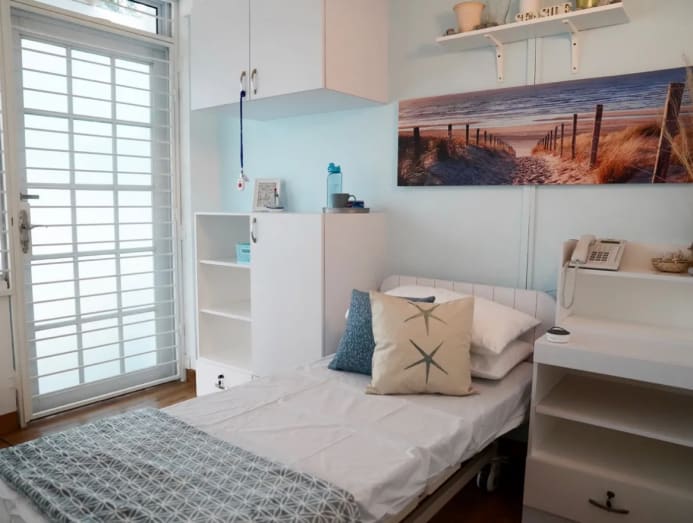
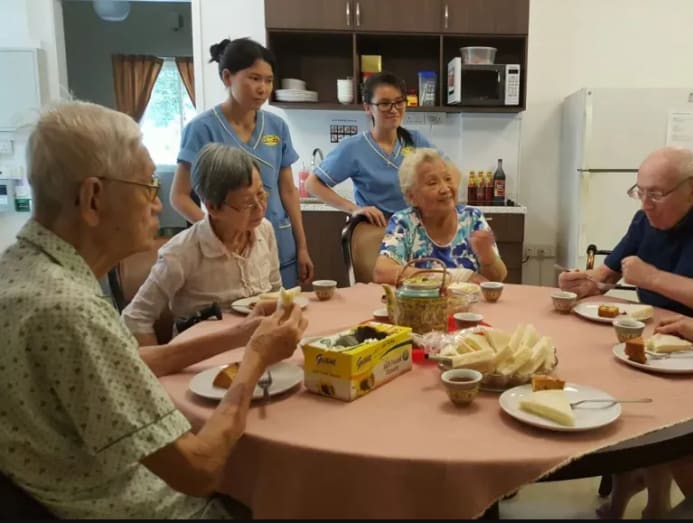
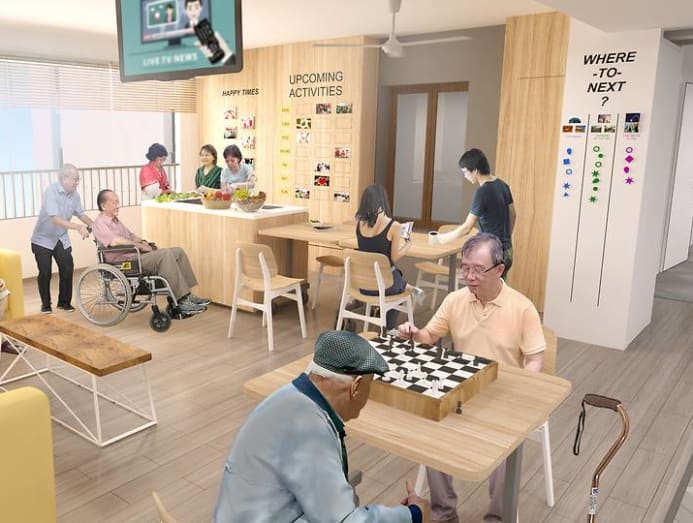
HDB’s approach requires residents to subscribe to a basic service package, which includes access to 24-hour emergency monitoring and basic health checks, among other things.
The appetite for such an option is evident – there were more than four applicants vying for each of the 169 units available.
But where it differs from private sector models is that services such as meals, laundry and cleaning require extra charges. Dr Wee’s concern is that some seniors may choose to opt out of these add-ons to save money, even if they genuinely need help with them.
“These seniors should be the sort that already need help with instrumental activities of daily living (IADLs) … So I feel that minimally, the IADL help should be provided.”
COMBINING SPACES WITH SERVICES
The key is integrating physical spaces with services, said Dr Tsao. “Most people live in HDB flats, and that service can come to the home or (seniors) can come to a centre, but it's not integrated where they live.”
It is why she pitched another idea in the same vein as assisted living: A “green house” model, which has been adopted in countries such as the United States and Australia.
A green house community would have clusters of smaller homes with six to ten residents, and a few staff members who help with personal care, cooking, cleaning and who interact with seniors. Residents are free to organise their lives and schedules any way they wish.
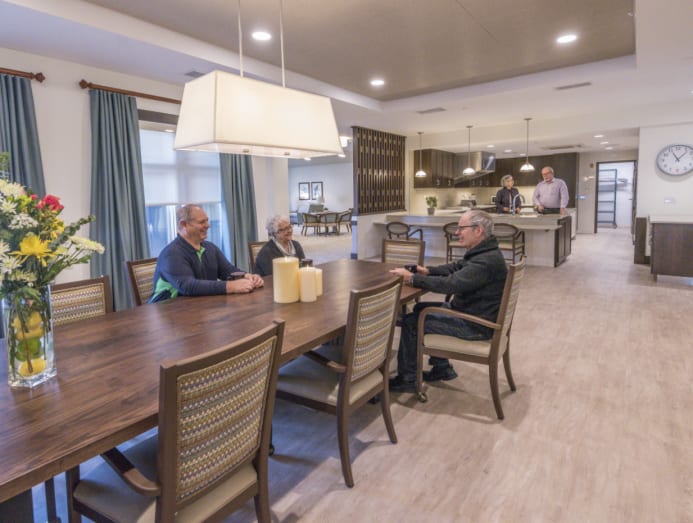
Another model that has been established overseas: Continuing care retirement communities. These are an “all-in-one” option that offer independent living, assisted living and nursing home care, meaning you can remain in one setting even if your needs intensify over time.
“It becomes a spectrum. You don't leave the community,” explained Dr Tsao.
Under the Action Plan for Successful Ageing in 2015, HDB and MOH said it would be doing this in new areas, such as Tampines North, by co-locating nursing homes and senior activity centres with HDB flats.
Another model that's been adopted in countries such as France is intergenerational housing, noted Kavitha Hariharan, director at Marsh McLennan Advantage, which focuses on societal ageing.
Under this model, young people rent flats from seniors at below-market rates, and in return, are expected to maintain friendships or be a watchful presence, for instance.
Providing social connections would help combat afflictions such as loneliness – which is “terribly damaging” particularly for seniors, said Ms Hariharan.
GROWING DEMAND
Experts commended the efforts to develop new approaches to eldercare housing, but expressed concerns that they might not come to fruition quickly enough to support Singapore's rapidly ageing population.
For instance, there are 169 community care apartments which will be ready in 2024.
A second ‘vertical kampung’ is being developed at Yew Tee, which features senior housing and healthcare and services in the same compound, following the success of Kampung Admiralty. This will have 68 units, to be ready in 2027.
Singapore's first health district is also being developed at Queenstown, with senior-friendly designs and programmes to encourage “purposeful longevity”, but this is a long-term development.
Dr Kelvin Tan, who teaches gerontology at the Singapore University of Social Sciences (SUSS), pointed out that developments which adopt a new approach will take not just years to be completed, but also take time to be trialled.
By 2030, Singapore will have one in three citizens aged 55 and above. “Baby boomers are moving into this generation where they are going to be either semi-retired or in early retirement because of the pandemic … I think we need the numbers to be faster ramped up.”
This urgency is another reason authorities can be more “aggressive” and “a bit more bold” in experimenting with residential eldercare pilots, said Dr Tsao.
IT’S A QUESTION OF COST
But rolling out new accommodation options is complex.
One big question is how much these alternative eldercare developments could cost, especially if they require more land – a scarce resource in Singapore.
Dr Tsao said: “The private sector can afford that kind of thing. Maybe buy a private condominium, develop it in such a way that it's with services integrated. But 85 per cent of people will not be able to afford that."
As such, weaving eldercare into existing public housing should be a priority, she said.
Retrofitting buildings in estates that already have more seniors could be a start, she said, adding that one storey in a block could be carved out for green house homes, while also tapping on existing community services.
While she hasn’t nailed down exact cost calculations, including for staffing, she said: “I would still think it’s cheaper. Building an extra floor in an HDB is cheaper than getting a piece of land and putting a building on it.”
Related:
As for Dr Wee’s model of assisted living, current residents pay at least S$5,000 a month, depending on the room type and location of the facility.
Out of this, about S$1,800 to S$2,000 is for the care alone without accommodation costs. These sums might be prohibitive for some, she acknowledged.
She added that costs are also understandably a concern for the Government, who will have to cater for the masses – but with economies of scale, costs could likely be brought down.
“From ALFA’s perspective, I think it's more important to be talking about the quality and the type of services to roll out,” she added.
IMPROVING NURSING HOMES
Improving the residential eldercare landscape also means not just thinking about new approaches, but also about how to improve existing ones.
This is particularly so for nursing homes, which have long suffered from stigma, even though they are critical in the care spectrum, said NUS CARE’s Assoc Prof Fung.
MOH has worked to improve nursing home designs over the years. “The newer nursing homes … there isn’t a harsh boundary fence, so as to invite the community to pass through … Engagement with the community is a very important aspect.”
Nursing homes have also been making efforts to move towards person-centric care, which is tailored for each individual’s needs, allowing them to maintain their sense of self, said Assoc Prof Fung.
At All Saints’ Home, for example, residents have become more communicative about their needs, allowing the home to provide this type of care. This could be in the form of cooking food to satisfy their cravings or catering to their interests – such as providing a piano for a client who used to be a piano teacher.
Studies have also been done on improving quality of life through design, including a recently-concluded one led by NUS CARE’s team.
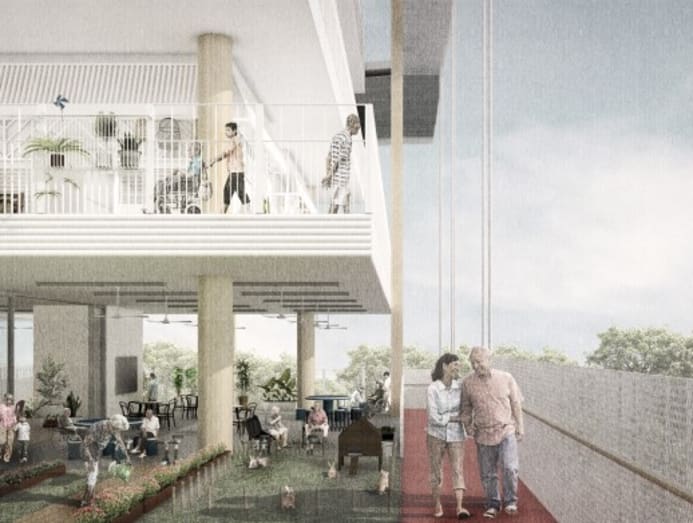
Proposals include lower-density wards, giving individuals more control over their immediate environment, flexible spaces and even shifting from terms such as “wards” to “bedroom” to remove stigma.
Assoc Prof Fung added that in designing for seniors, it’s not just about features such as railings or barrier-free accessibility – which are “low hanging fruit” – but rather the “totality of the environment” including neighbourhood and transport system designs, he said.
“Age-friendly environments are also about the software - how do we bring the community to buy in, take ownership of some of this caring of seniors? … We want to move towards encouraging participation.”
MANPOWER A BIG CHALLENGE IN IMPROVING RESIDENTIAL CARE
In giving seniors more options for their golden years, there are challenges to be resolved, many of which are manpower-related.
For starters, Singapore must continually identify what skills and investments its workforce needs at “every part of the continuum” as the sector evolves, said Oliver Wyman’s Ms Hariharan.
“Things like salaries are probably going to have to be re-looked at again. Achieving the right balance between local recruitment workers that we hire from overseas – that's going to be a challenge for Singapore as well as other countries.”
Making sure the career is seen as more attractive and developing opportunities so that the sector can retain talent is another hurdle, she said.
“We also have to take in mind the mental and emotional wellbeing of the workers as well, particularly coming out of a pandemic, where it’s been necessary for a lot of care workers to make sacrifices to prioritise the safety of the residents.”
“It's always been a difficult job, both in terms of the physical demands of the profession as well as the emotional requirements… And we kind of take it for granted that they will cope with all of this stress.”
They should thus be provided the right support and resources to help them manage this, she said.
To ease manpower challenges, the authorities can look to automation or technology – such as using robots for cleaning or meal dispensing, or even exoskeletons to protect workers as they carry residents, said Ms Hariharan.
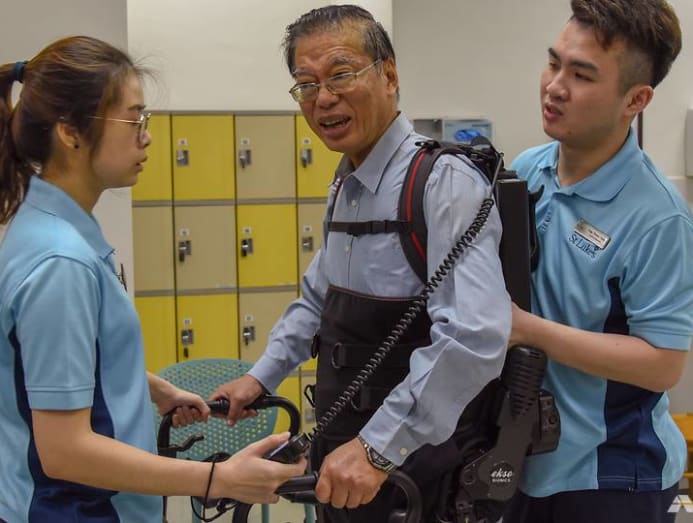
DISCARDING AGEIST MINDSETS
Just as important is the need to do away with ageist mindsets.
Getting people’s acceptance will be the biggest barrier to implementing more residential eldercare options across the island, said Dr Tsao.
She said Singapore has come a long way in this regard. While elderly people were once seen as burdens, there has been a concerted push to see “longevity as an opportunity”.
But negative attitudes persist, as evidenced by the discontentment of some residents around the construction of nursing homes in their neighbourhoods.
This “not in my backyard”, or NIMBY, syndrome must be rooted out, especially as Singapore hurtles toward an inevitable future of an aged population, said experts.
Dr Tsao added: “As the population gets older and more and more people have their parents older, hopefully they'll change their mind … You can’t banish all these older people to these camps in the middle of nowhere because ‘I don't like it’, right?”
The lack of licensing for private eldercare models will also have to be addressed. Currently, private sector assisted living facilities are not regulated.
These developments blur the line between residential and healthcare facilities, so it is challenging to navigate what rules on issues such as land use, manpower and fire safety apply, said Dr Wee.
"NO ONE SIZE FITS ALL"
Overall, experts are confident in the collective action authorities are taking to improve the spectrum of residential eldercare options.
A refreshed Action plan for Successful Ageing will also be launched next year, looking at how to empower seniors to continue contributing.
SUSS’ Dr Tan added: “Given that we only have so many resources, especially in Singapore, (such as) manpower, we definitely need older people to be an active part of society.”
Dr Tsao added that authorities are willing to invest in support for productive ageing, while HDB is “more open to retooling the built environment” for seniors.
“So I think the overall mindset is right. Some will be faster, some a little slower in achieving it, but at least they’re all open to thinking about it that way. … 30 years ago, or even 20 years ago, it wasn’t like that.”
On residential care options, Assoc Prof Fung added that the pilots are a good start, adding that he hopes more will emerge.
“Certainly, the testing of various models is necessary, because no one size fits all,” he said.
“My sense is that all different models will find their niche because there will be different people with different needs.”
This also means that the disappearing “pioneer” models of eldercare in bungalows, such as Soo’s Nursing Home, still have value, he said.
“There’s a place for that kind of setting, that sort of environment, that sort of care … I think we need to support that kind of effort concurrently while we are building more modern, more contemporary, high-density kinds of facilities.
"That would be my approach, that we should support different types of communities.”
After bidding an emotional goodbye to her long-time home and small network of housemates-turned-friends, residents like Ms Hock likely would agree with that perspective.
Editor's note: This story has been updated to reflect the latest available data on the proportion of citizens aged 65 years over in 2021. A statistic about the proportion of Singapore citizens who will be 55 and above by 2030 has been corrected.






